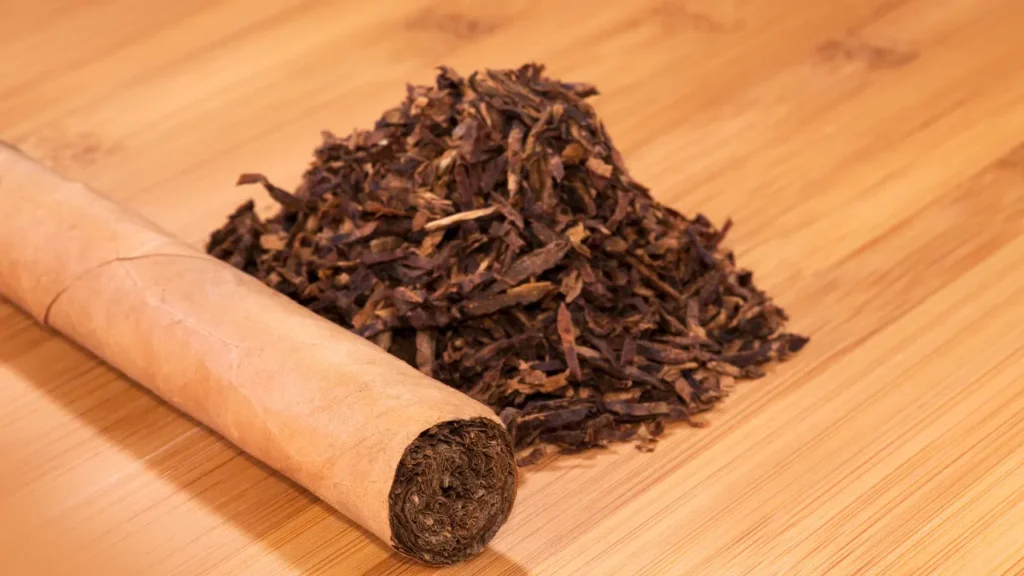The plant known as tree tobacco (Nicotiana glauca) is interesting due to its biological characteristics as well as its historical use. It originated in South America and has since expanded to many regions of the world, adjusting to many conditions and climates. In contrast to Nicotiana tabacum, the well-known relative that is frequently found in commercial tobacco products, Nicotiana glauca has special alkaloids that add to its unique pharmacological profile. The purpose of this article is to examine the properties of tree tobacco, its chemistry, possible health advantages, ideal dosages, side effects, and interactions with other drugs. It will also explore how to use this nootropic supplement responsibly to improve alertness, focus, and cognitive function.
You May Also Like:
ONNIT Supplements Antarctic Krill Oil Reviewed: A Leading Memory Support Supplement
Tree Tobacco: Benefits, Dosage, Side Effects, Drug Interactions, and Other Important Information is an original (NootropicsPlanet) article.
Nature of Tree Tobacco
Scientifically referred to as nicotiana glauca, tree tobacco is a wild tobacco plant native to South America that has spread throughout the world. This perennial shrub has the potential to grow to a considerable height; it frequently reaches 6 meters, or almost 20 feet. Its glaucous, or bluish-green leaves are one of its distinguishing characteristics and are responsible for its common name. Little yellow tubular blooms that are visually pleasing and provide nectar for some pollinators are produced by the shrub.
Tree tobacco grows well in a range of places, including soils in both urban and rural regions, roadside ditches, and riverbanks. Its ability to adapt has allowed it to disperse far beyond its original area. Tree tobacco, despite its common name, is not used commercially for tobacco products, in part because it differs from its relative, Nicotiana tabacum, the main species used for chewing, smoking, and snuff, because of the presence of poisonous alkaloids.
Although the plant’s toxicity limits its traditional applications, indigenous individuals have long used it for medical and ceremonial purposes. The strong bio-active substances in the herb are potent, so cautious use is highly recommended. This emphasizes how crucial it is to understand the chemical composition and physiological impacts it can have on the body.
Health Benefits
Anabasine, an alkaloid found in tree tobacco, has the ability to enhance cognitive function. This is why its health advantages are primarily discussed from a nootropic standpoint. The plant is poisonous, which contributes to the paucity of research on the potential health advantages of tree tobacco and its constituents. Though theoretical and needing more research to be confirmed, the pharmacological activity of anabasine on nicotinic acetylcholine receptors suggests various areas where it might be beneficial:
- Enhanced Cognitive Function: By stimulating nAChRs, anabasine can enhance cognitive processes such as attention, memory, and learning. This stimulation can lead to improved synaptic efficiency, potentially offering benefits for cognitive performance.
2. Increased Alertness and Focus: The action on nAChRs can lead to increased release of neurotransmitters like dopamine, which is associated with alertness and the ability to focus on tasks.
3. Potential Neuro-protective Effects: There is some evidence to suggest that activation of nicotinic receptors could have neuro-protective effects, possibly through processes that reduce neuro-inflammation or through the modulation of neurotransmitter release, offering protection against neuro-degenerative diseases. However, this area requires much more research to determine the applicability and safety of anabasine or tree tobacco extracts in this context.

Chemistry of Tree Tobacco
The alkaloid content of tree tobacco, which accounts for both its pharmacological properties and toxicity, makes up the majority of its chemical composition. Nicotiana glauca contains the main alkaloid anabasine, which is chemically similar to nicotine but has different effects on the body, especially when it comes to how it interacts with nicotinic acetylcholine receptors (nAChRs).
The ligand-gated ion channels known as nAChRs, which are involved in the transfer of nerve impulses between synapses, are similar to anabasine. Anabasine mimics the actions of acetylcholine, a neurotransmitter involved in a variety of processes such as muscular activation, pain response, and different autonomic nervous system activities, by binding to these receptors. Anabasine’s toxicity and possible therapeutic uses are both supported by this interaction.
Nicotiana glauca also includes additional alkaloids, but in smaller amounts than anabasine. These include several other nicotiana alkaloids, nicotinamide (niacinamide), and nicotinic acid (niacin), all of which contribute to the overall chemical profile and effects of the plant.
Tree tobacco is of interest for research into new pharmacological drugs due to the presence of these alkaloids. However, care must be taken due to the toxicity and the potential for addiction of its main alkaloid, anabasine. It is essential to understand the unique functions and processes of these substances in order to weigh the advantages and disadvantages of tree tobacco and its derivatives.
Physiological Properties of Tree Tobacco
The properties of tree tobacco, specifically its active compound anabasine, involve the modulation of nicotinic acetylcholine receptors (nAChRs). These receptors are a class of ligand-gated ion channels found throughout the nervous system, both in the central nervous system (CNS) and the peripheral nervous system (PNS). The nAChRs play a crucial role in mediating synaptic transmission and are involved in a wide array of physiological processes, including muscle contraction, heart rate regulation, and the release of various neurotransmitters.
Anabasine, similar to nicotine, acts as an agonist at these receptors, meaning it binds to and activates nAChRs. Upon activation, the receptors undergo a conformational change that opens their ion channel, allowing the influx of sodium (Na+) and calcium (Ca2+) ions into the neuron. This influx of positively charged ions leads to depolarization of the neuron, increasing its excitability and potentially triggering an action potential if the depolarization reaches a certain threshold. This action can enhance synaptic transmission and influence neuronal communication.
Acetylcholine, dopamine, and glutamate are among the neurotransmitters that can be released in greater amounts when substances like anabasine stimulate nAChRs in the central nervous system (CNS). Dopamine is involved in pathways related to reward and motivation, acetylcholine is crucial for memory and learning, and glutamate is the main excitatory neurotransmitter in the brain and is essential for synaptic plasticity, which is the ability of synapses to become stronger or weaker over time.
The possible nootropic (cognitive-enhancing) effects of the alkaloids in tree tobacco stem from this augmentation of neurotransmitter release and synaptic transmission.

Optimal Dosage
It is difficult to determine the ideal dosage of tree tobacco or its extracts because the different plant sections and preparations have varying alkaloid concentrations. In addition, care must be used due to the limited therapeutic window and possibility for toxicity. There are few clinical studies that explicitly look into tree tobacco dosages, which makes it challenging to suggest a dosage that is both safe and beneficial. Individuals ought to proceed cautiously, begin with small dosages, and closely monitor their bodies’ reactions.
Side Effects
Despite the allure of tree tobacco’s nootropic potential, it is important to weigh the risks involved. Anabasine exhibits a similar toxicity profile to nicotine, albeit with less potency. It can cause nausea, vomiting, tachycardia, hypertension, and in extreme circumstances, respiratory failure and death. It is not recommended to use it without a doctor’s supervision. Another major worry is the possibility of addiction and withdrawal symptoms resembling those of nicotine.

Potential Substance Interactions
Tree tobacco can interact with a range of drugs and supplements due to the pharmacological activity of anabasine and its impact on neurotransmitter systems. Medications metabolized by enzymes impacted by nicotinic agonists, stimulants, and anticholinergics are a few examples of these. When used with other drugs that affect the cholinergic system, tree tobacco can increase side effects or reduce the effectiveness of therapies for diseases like schizophrenia or Alzheimer’s disease.
Best Responsible Use
It’s important for anyone thinking about using tree tobacco as a nootropic to weigh the advantages and disadvantages of the drug. Self-experimentation is especially dangerous because it lacks standardized dosing and thorough clinical testing. If someone decides to use tree tobacco or its extracts, they must do so under a doctor’s supervision, starting with small doses and regularly monitoring for negative effects. Additionally, anyone with a history of substance abuse should refrain from using alkaloids like anabasine due to their propensity for addiction.
Tree Tobacco:
Conclusion
Tree Tobacco can be very benefiial as a nootropic, however there is still more research that needs to be done. It’s essential to approach tree tobacco with caution. Every part of the plant is potentially poisonous to both humans and livestock4. As such, any exploration of its nootropic properties should be guided by rigorous research and expert advice.
In conclusion, while tree tobacco’s nootropic benefits remain less explored, its unique characteristics and nicotine content make it an intriguing subject for further study. As with any supplement, always prioritize safety and consult a healthcare professional before incorporating tree tobacco into your regimen.

References:
- Nicotiana glauca (tree tobacco) intoxication–two cases in one family. Retrieved from: https://pubmed.ncbi.nlm.nih.gov/20652661/
- Nicotiana glauca (tree tobacco). Retrieved from: https://www.cabidigitallibrary.org/doi/10.1079/cabicompendium.36324
- Tree Tobacco – Uses, Side Effects, and More. Retrieved from: https://www.webmd.com/vitamins/ai/ingredientmono-1519/tree-tobacco
Important Note: The information contained in this article is for general informational purposes only, and should not be construed as health or medical advice, nor is it intended to diagnose, prevent, treat, or cure any disease or health condition. Before embarking on any diet, fitness regimen, or program of nutritional supplementation, it is advisable to consult your healthcare professional in order to determine its safety and probable efficacy in terms of your individual state of health.
Regarding Nutritional Supplements Or Other Non-Prescription Health Products: If any nutritional supplements or other non-prescription health products are mentioned in the foregoing article, any claims or statements made about them have not been evaluated by the U.S. Food and Drug Administration, and such nutritional supplements or other health products are not intended to diagnose, treat, cure, or prevent any disease.


